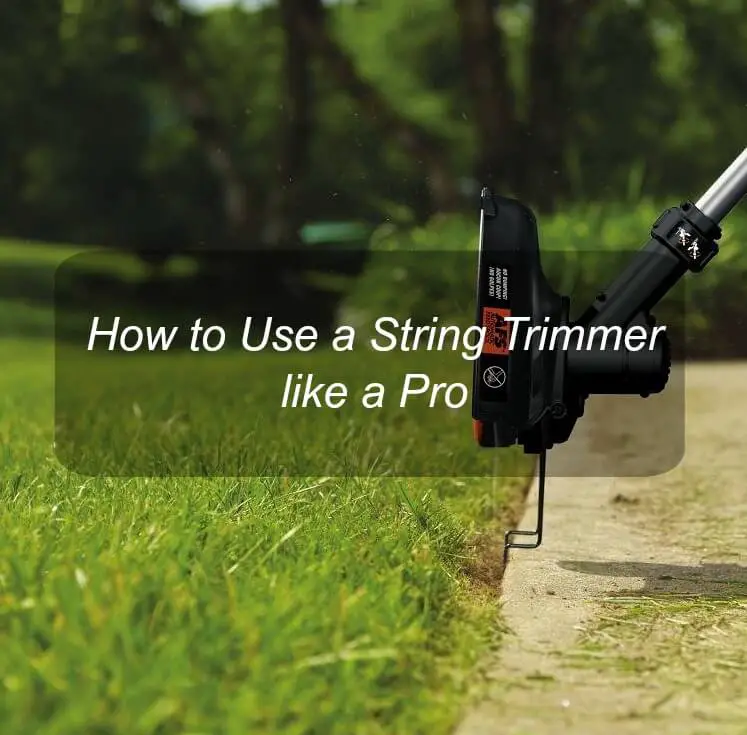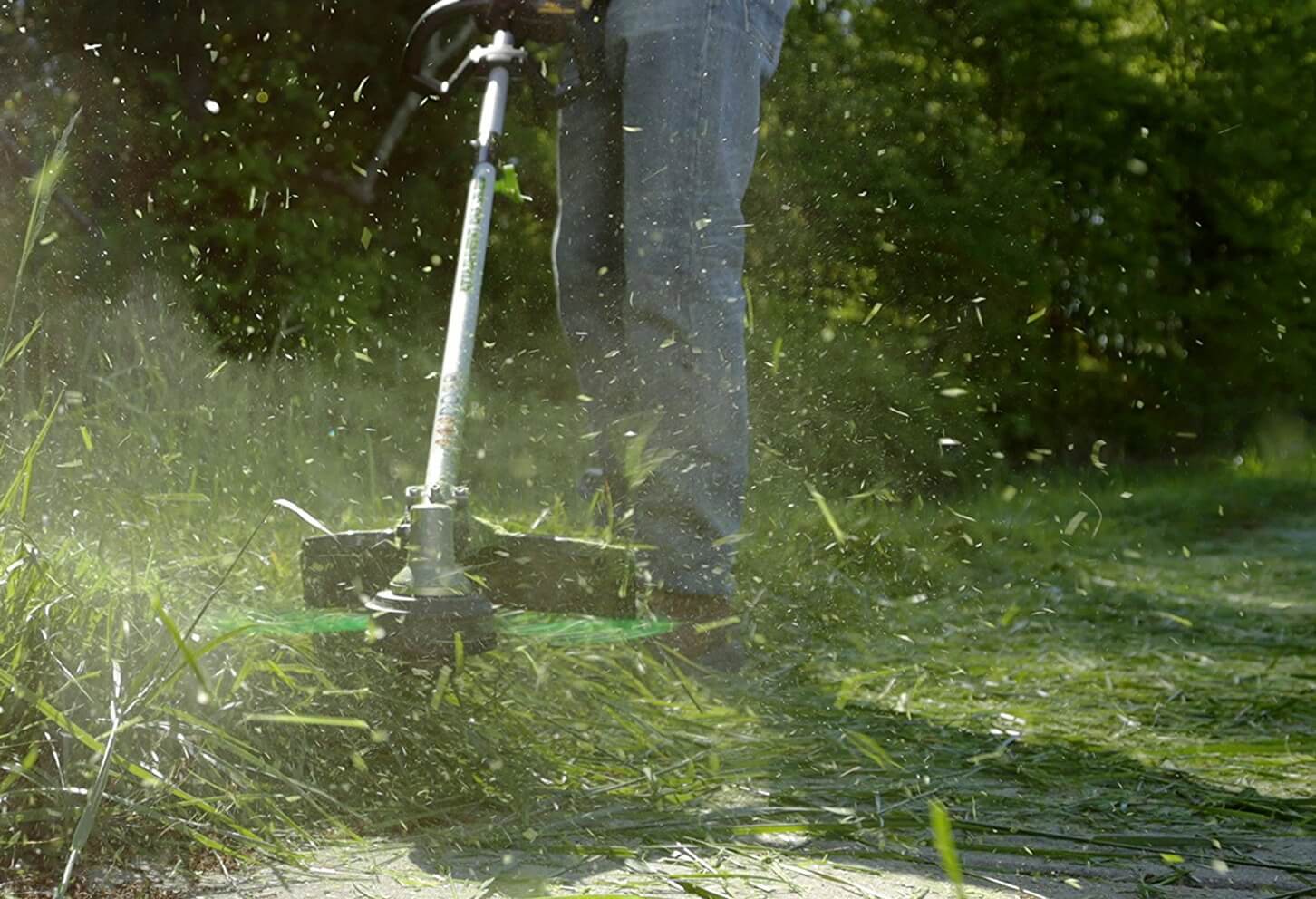
How to Use a String Trimmer like a Pro
Buying the best string trimmer is one thing, but using it properly is something else. A high-quality weed eater / string trimmer will deliver the best performance and professional results only if you can use as instructed by the manufacturer. So, how do you use a string trimmer like a pro? Are there safety precautions to take? This post will provide you with some insights on how to get the job done like a professional.
Get to Know Your String Trimmer
A vital step in using a weed eater is to become familiar with your tool and all of it's functions. Take your time and do your research on the common features of your trimmer, where to find them, and exactly how they function. The reason for this is there are many different types of weed trimmers currently available and while they are similar, their controls will all differ slightly. All these tools use the same mechanism, but will operate differently. The parts or elements to take note of are engine/motor, shaft, line and a line cutter, start switch, handle, harness, guard, and spool.
Safety Precautions When Using Your Trimmer
The trimmer is a rapidly revolving cutting head featuring a hard trimming line trailing from the end. The cutting potential of the trimmer is great and you will appreciate this if you have ever seen someone operate the tool. To prevent unnecessary injuries here are some valuable tips to help you stay safe:
Wear Protective Gear
The trimming line of weed eaters can spin at speeds of up to 3000 revolutions per minute. Imagine what would happen if the line snaps? You need to protect your eyes, ears, hands, legs, feet and the rest of your body by wearing protective gear. Protect your eyes and your face using the right helmet and or goggles. Use sturdy trousers and a pair of tough gloves. And no matter what style of trimmer you use (gas or electric), you absolutely need to wear a set of quality hearing protection.
Mind the Cables / power cords
Most Electric trimmers these days feature cables or cords for power supply. While these trimmers are generally not as powerful as their gas-powered counterparts are, they have enough cutting power to damage cable insulations. With time, the effect can reduce the efficacy of the cables leading to short circuit. Be careful about tripping and slipping hazards. If you don't want to deal with those cables / cords getting in your way, you can consider looking into getting a battery powered trimmer. They have really come a long way in recent years.
Watch Your Surroundings
When using your trimmer, you will need to be mindful of your surroundings. Flying debris such as stone and pebbles may hit and injure bystanders or pets that lurk around. Buildings with glass windows and doors of buildings and cars are at risk and so you need to avoid working close to them. Be aware of cars driving by as well as people and pets.
Care for Liquid Fuels and Fumes
The most powerful string trimmers are those powered by gas. However, these tools use highly flammable fuel and produce exhaust emissions. You need to be extremely cautious because of carbon monoxide. This dangerous mission is invisible and very poisonous. Therefore, you must not use gas powered string trimmers in enclosed rooms with poor ventilation. This is another reason to consider looking into a battery powered trimmer.
Also Read: Top 7 Best Lawn Mower Lifts [Buying Guide]
Using a String Trimmer for Professional Results

Once you know your weed eater and understand the important safety precautions to take, it is time go out and apply what you have learned. First, you need to prepare to use your trimmer. You do this by reading your instruction manual very carefully and thoroughly, preparing your garden by removing hazardous debris and stones, wearing your protective gear and starting the trimmer.
Here is how to go about using a string trimmer like a pro:
1. Consider the cutting direction
Have you ever seen a circular saw work? I'm guessing you probably have. Sawdust ejects from one direction. A trimmer ejects or displaces grass and debris from the line and spool. The direction of displacement depends on the spinning direction of the spool. If the spool rotates clockwise, then the debris will eject on the right side and vice versa. This knowledge is important because you need to eject debris from where you are cutting.
2. Where Is The Cutting Power
A string trimmer is designed to use high-speed centrifugal force to perform the cutting process. The faster the spinning speed, the stiffer the line and this leads to greater cutting potential from the trimmer. Many people believe that they can do the cutting just by hovering your trimmer over grass. This is not accurate. The cutting power is focused at the very ends of the trimming line. You must know the sharp point of a cutting tool to use such tool properly.
3. Master the trimmer cutting techniques
A string trimmer is a very versatile tool. It features four basic cutting techniques. If you master these techniques, chances are that you will have professional results. The techniques include edging, screening, scything and tapering. Each of these has its own uses as well as unique aesthetics depending on your desired results. Here is a brief discussion of each of the techniques:
-
Edging: You use this technique where two surfaces are flush. It gives you sharp, clean cut finish. An example where edging would be necessary is the area between your lawn and driveway and areas where your flowerbeds meet your lawn. You achieve this by keeping your trimmer spool flat and parallel to the ground. All you need to do is choose your desired cut height then get into a comfortable working position and then walk into your cut path. The tool easily ejects stones and debris and so you must beware.
-
Tapering: Tapering is somewhat similar to edging in some ways, but not identical. The technique will help you treat the edge along walls, fence lines, trees, and curbs. Tapering requires that you hold your trimmer in such a way that its string strikes the grass at slight angles.
-
Scything: The word scythe simply means an obstruction. Scything is the technique you will use on longer grass and weeds. It is only possible if you are using a powerful trimmer such as the gas-powered models. The technique allows you to cut around awkwardly placed obstacles. To achieve this, you must take a long stance and bring the trimmer in and out of the cutting area in a shallow “U” shape.
-
Screening: Screening is considered fast and effective for cutting grass and weeds that thrive on sidewalk cracks, sideways and paths. Tip the trimmer such that its strings are just off of the pavement and then move it onto the start of the weeds and cut. Take care when screening. If you angle the trimmer too shallowly, it will not cut, but eat into the string. On the other hand, if you angle the weed eater too sharply then the string will not be able effectively hit the weed base.






I like the post very much. Thanks for sharing!
Is it OK to use a string trimmer on weeds that are still damp or wet from rain? Will it still be effective as long as they are not weighted down with water? Will it damage my string trimmer?
String trimmers work better in wet weeds.